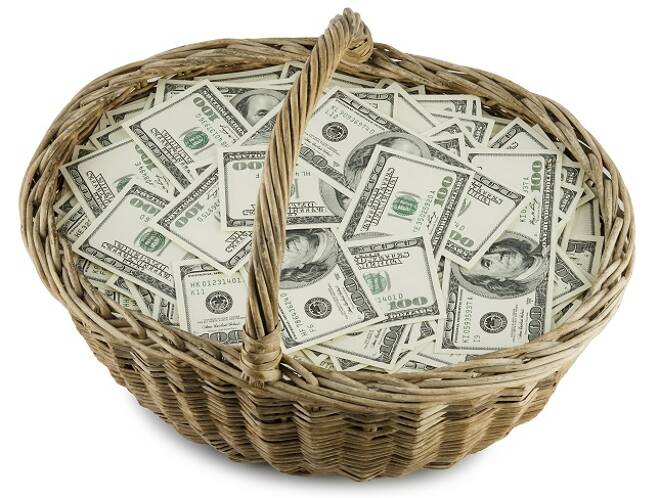Advertisement
Advertisement
Dollar Less-Attractive After Dovish Fed Drives Treasury Yields Lower
By:
The drop in U.S. Treasury yields helped make the U.S. Dollar a less-attractive investment sending the major currencies sharply higher. After the Fed statement and Powell’s remarks, the futures markets continued to price in no further tightening while indicating a small chance for a rate cut over the next year.
U.S. Treasury yields dropped on Wednesday setting off a wave of activity in the commodity and financial markets after the Federal Reserve signaled to some investors that it may slow the pace of interest rate increases in 2019. Fed policymakers left the benchmark overnight lending rate unchanged between a range of 2.25 percent and 2.50 percent at their January meeting.
In the cash market, 2-year U.S. Treasury Notes settled at 2.512 percent, down 0.014 percent, 5-year Treasury Notes settled at 2.490 percent, down 0.015 percent and the benchmark 10-year Treasury Notes finished at 2.681 percent, down 0.014 percent. The yield on the 30-year Treasury bond was mostly unchanged at 3.054 percent.
Yields were pressured after Fed policymakers said the central bank would be patient when making decisions about future monetary policy. The Fed also removed references to “further gradual increases” to the federal funds rate in its monetary policy.
It Starts with Treasury Yields then Moves to the U.S. Dollar
The drop in U.S. Treasury yields helped make the U.S. Dollar a less-attractive investment sending the major currencies sharply higher. After the Fed statement and Powell’s remarks, the futures markets continued to price in no further tightening while indicating a small chance for a rate cut over the next year.
March U.S. Dollar Index futures settled at 95.031, down 0.485 or -0.51%.
Earlier in the session, the index was boosted by stronger-than-expected private sector jobs data for January. Payrolls processor ADP reported that the U.S. private sector added 213,000 jobs in January. That beat forecasts for gains of 178,000, but the monthly total came in lower than job gains of 271,000 in December.
The EUR/USD recovered from early session weakness to post its highest close since January 11. The USD/JPY also tumbled despite the increased demand for higher-yielding stocks. The drop in Treasury yields helped tighten the spread between U.S. Government bonds and Japanese Government bonds, making the Japanese Yen a more attractive investment. The biggest gains were in the Australian and New Zealand Dollars, which rose 1.17% and 0.97% respectively against the U.S. Dollar. The Aussie was also boosted by stronger-than-expected headline inflation data.
Gold Was Ahead of the News
The reaction in the gold market to the Fed news wasn’t as pronounced as the rally in stocks or currencies. Although the Fed was reassuringly dovish, it wasn’t hugely unexpected by gold investors, who started the ball rolling last Friday with a strong surge to the upside.
April Comex gold reached its highest level since June 14, rallying as much as $13.40 on an intraday basis, it only managed to finish at $1315.50, up $0.30 or +0.02%.
The price action suggests investors had priced in the dovish Fed news, but the buying wasn’t strong enough to overcome the increased demand for risky assets.
About the Author
James Hyerczykauthor
James Hyerczyk is a U.S. based seasoned technical analyst and educator with over 40 years of experience in market analysis and trading, specializing in chart patterns and price movement. He is the author of two books on technical analysis and has a background in both futures and stock markets.
Advertisement
